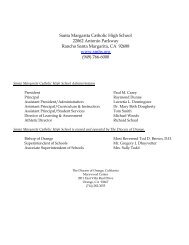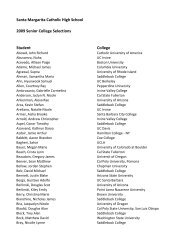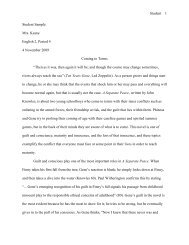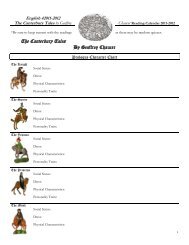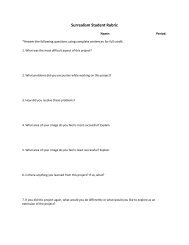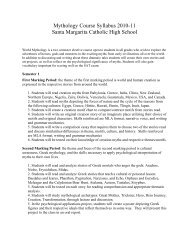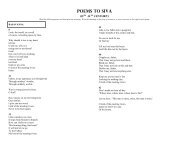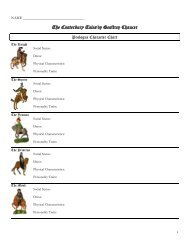Picasso Art Article
Picasso Art Article
Picasso Art Article
Create successful ePaper yourself
Turn your PDF publications into a flip-book with our unique Google optimized e-Paper software.
T<br />
_<br />
HE CUBIST<br />
REVOLUTION<br />
"I paint objects as I think them, not as I see them." —Pablo <strong>Picasso</strong><br />
When <strong>Picasso</strong><br />
moved to Paris<br />
in 1904, he was<br />
already well known and<br />
respected for his painting,<br />
drawing, graphic art, and<br />
sculpture. But he felt stifled<br />
by traditional realism. He<br />
wanted more freedom, and<br />
a more imaginative way to<br />
express himself.<br />
In the self-portrait on the<br />
cover, <strong>Picasso</strong> experiments<br />
with heavy black lines, using<br />
them to outline the forms<br />
of his face. But it was not<br />
until 1907, when he visited<br />
a museum of non-Western<br />
art in Paris, that he found<br />
the inspiration that led him<br />
to invent Cubism.<br />
It was there that he first<br />
saw African masks like the<br />
one on page 10. He was<br />
fascinated with the way<br />
these masks simplified forms<br />
and divided them into flat<br />
planes. The masks also<br />
showed <strong>Picasso</strong> a fresh way<br />
to think about art. Instead of<br />
trying to create realistic copies<br />
of faces, the artists who<br />
made these masks interpreted<br />
what they saw. They distorted facial features to express<br />
emotions and qualities like humor or fierceness. <strong>Picasso</strong><br />
called African art an "art of reason" because he thought<br />
African artists depicted not what they saw, but what they<br />
thought and felt.<br />
African masks had an immediate influence on <strong>Picasso</strong>'s<br />
work. He too wanted to make art that showed what<br />
A SCHOLASTIC ART* 2009<br />
he saw not with his eyes but<br />
with his mind. In the study of<br />
a woman's head seen above,<br />
<strong>Picasso</strong> has simplified the<br />
complex structure of a woman's<br />
face into basic geometric<br />
forms. Her face has become<br />
A In what ways does this<br />
woman's face resemble the<br />
African mask on page 10?<br />
Bust of a Woman: Study lor Demoiselles D'Avignon,<br />
France, 1907. Oil on canvas, .660 m x .590 m. Musee<br />
National d'<strong>Art</strong> Moderne, Centre Georges Pompidou,<br />
Paris, France. Photo Credit: CNAC / MNAM / Dist.<br />
Reunion des Musees Nationaux / <strong>Art</strong> Resource, NY. ©<br />
2009 Estate of Pablo <strong>Picasso</strong> / <strong>Art</strong>ists Rights Society<br />
(ARS), New York.



